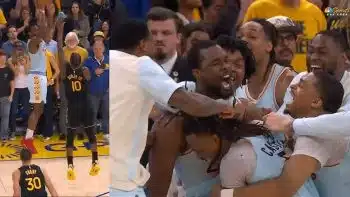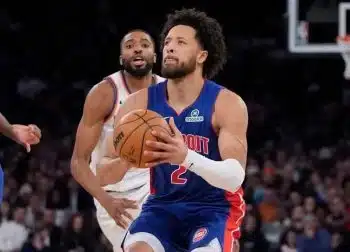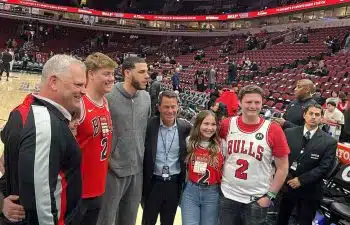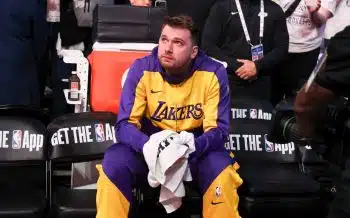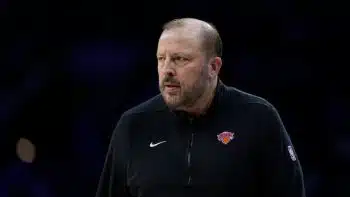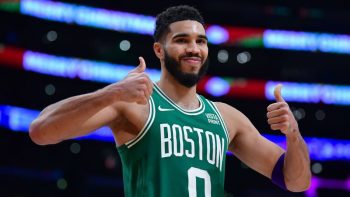NBA
Empty Tank: Hinkie’s Shadow Looms Over NBA
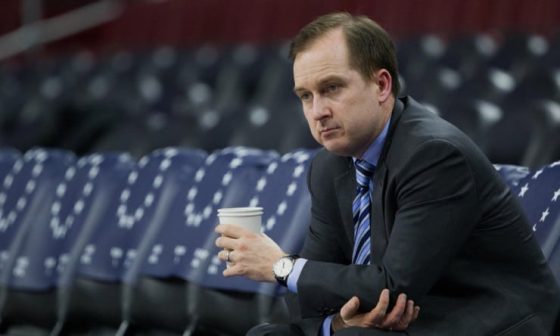
Sam Hinkie’s resignation as the general manager in Philadelphia brought a clear end to an era. What began as the league’s most fascinating experiment, a test of how far one team could push the league’s rules on restocking talent, finally reached its breaking point after just three years.
As reporting shed light on what was ultimately a very strange departure from Hinkie, it became clear issues with his process were both internal and external. His impersonal handling of many young players reportedly irked a number of agents, a small-but-influential group of power brokers who often shared his orbit. His well known desire to extract every drop of value in trades bothered some opposing executives – another small group with whom Hinkie would have to cross paths repeatedly as part of the job.
Divisions stacked up closer to home, as well. “Trust the Process” was either a battle cry or a punch line in Philly depending on which side of the tape you were on, and it wasn’t even always clear publicly where members of Hinkie’s own organization fell.
Whether you call it an ouster or a true resignation, Hinkie’s eventual departure signaled at least a partial white flag. Even in a context where all parties understood the broad reasoning behind his approach, the particulars were cumulatively too much to handle. Jerry Colangelo was brought in and a rebuilt management team had already begun to run contrary to the Hinkie ethos well before he was out the door, their pivot all but sealed by a resignation letter that eventually became public.
And as the league’s tanking poster boys finally prepare for a season where winning games is more than a farce, Philly’s situation serves as an interesting microcosm for the league as a whole: For the first time since Hinkie’s plan was put into place, and likely since well before that even, we’re set to enter an NBA season without a single obvious tanking candidate.
Is this just a one-year coincidence, or is it the beginning of a larger league-wide sea trend? There’s evidence on both sides.
On the one hand, it’s easy to point to temporary circumstance. The 76ers are jumping onto the front foot, and a few other primary tanking possibilities are either treading water or buried in the shallow end.
The Nets owe a 2017 pick swap to Boston, and though they still probably won’t be very good, that’s more due to lack of resources left over from a previous administration than a conscious tank attempt they have no actual reason to pursue. The Lakers already slogged through an unprecedented losing season for their franchise in a relatively blatant (and ultimately successful) attempt to hold onto last year’s top-three protected pick; it’s widely assumed they lack the stomach to do so again, and the jump from Byron Scott to Luke Walton plus expected development from high-ceiling youth might make it impossible anyway. The Suns are another team that could end up with a pretty ugly record regardless, but with multiple expected high-impact prospects in the fold from the 2015 and 2016 drafts plus guys like Eric Bledsoe, Brandon Knight and Tyson Chandler still in town, it feels like they’re going for gold and living with the results as long as the kids develop.
On the other hand, there’s no doubt the situation in Philadelphia made a lasting impression around the league. The NBA is a cyclical beast, and impersonators come with the territory.
“Things in the NBA, much like real life, can be so ‘trendy’ at times,” one assistant coach told Basketball Insiders. “Seems to me like people saw the Sixers’ situation, and because it didn’t go well, and the [front office] staff wasn’t allowed to see it through, [other teams] went away from ‘tanking’ because of it.”
Using other franchises as cautionary tales is standard practice in this league, and Hinkie’s 76ers attached a stigma to “strategic losing” that isn’t likely going anywhere soon. NBA basketball isn’t a video game. Even the most devout and disciplined observers of an analytical approach are prone to natural biases over such a long period of time. The agents, the opposing executives, the players in that Philly locker room, most of all the fans – at a certain point, the promise of eventual utopia crumbles under the weight of the present and the limits of human patience.
Of course, the other shoe dropping in Philly hasn’t suddenly removed the incentives that got their tanking ball rolling in the first place. CBA negotiations loom over these conversations, but with optimism growing that a new deal can be reached before December’s opt-out date, most don’t think fear of an unknown future is what’s getting in the way. There’s no bigger factor in a potential NBA title than superstar talent, and there’s no more reliable way to acquire (and retain) superstar talent than bottoming out and selecting at the top of the draft.
Some around the league consider Hinkie a brave pioneer through this lens, a martyr who blazed the trail to follow – and identified the pitfalls along the way. With the right tweaks around the margins, a savvy franchise can improve the optics of a tank job without actually changing much thematically.
“I do believe that some form of tanking will happen after the first quarter of the season,” the assistant coach said. “Some [front offices] start to feel like they won’t have a chance at making the playoffs.”
This has already been a common practice to some degree or another in previous years, and it could be an approach GMs are more aggressive about to avoid the up-front resistance Hinkie ran into frequently. Front offices obviously can’t instruct a coach to start losing suddenly mid-season, but it’s also not as if they have no control over their team’s makeup. Injuries can dictate these decisions on their own sometimes, but they’re just as often convenient excuses – rest a vet a few extra games here, hold a rookie out for “precautionary reasons” there. More refined tankers have already been drawing from this well for a long time, and given the ambiguity used in many cases, there’s a theoretical cap to how much the league could ever prevent this sort of thing.
There’s also no guarantee this is the beginning of the end for the full-on tank job. Pick swaps may have prevented one or two this very season, and an abbreviated version of Hinkie’s multi-year project could be more reasonable for teams in the right situation.
“I think [you] need a few ingredients,” a team executive told Basketball Insiders. “A team that’s stuck in a bad spot and has its own pick, and a GM that doesn’t feel pressure to win that season.”
Another half-decade project, though? Not likely.
“[It] still will be a long time, if ever, before anyone does it as blatantly as the 76ers again,” he said.
If we’ve learned anything about the NBA over the years, though, it’s to never entirely count out any range of possibilities. Could league insiders have expected a Hinkie-style teardown even a decade ago? Probably not. Copycats abound, and results are king.
“I do wonder,” says the assistant coach, referring again to how trendy the league can be, “if we see the Sixers become contenders in the next couple of years, how that will affect things?”
If Joel Embiid, Ben Simmons and Dario Saric all become stars and shake up the league’s balance of power on the way to prolific success, maybe those bemoaning Hinkie’s failures are suddenly looking to him as the blueprint for team-building – especially in smaller markets where attracting superstars is all but impossible. If another before them reaches the light at the end of the tunnel, perhaps it encourages more teams to start the journey themselves.
For now, though, the league will surely take a one-year hiatus from preseason tank talk. Ongoing CBA negotiations are a bigger fish to fry, and some time away from an issue that was gaining a lot of steam could cool waters Adam Silver and his team were slowly starting to sink into. The long-term effects of Hinkie’s experiment are yet to be seen, but his effect on the current tanking market is clear and pronounced.
